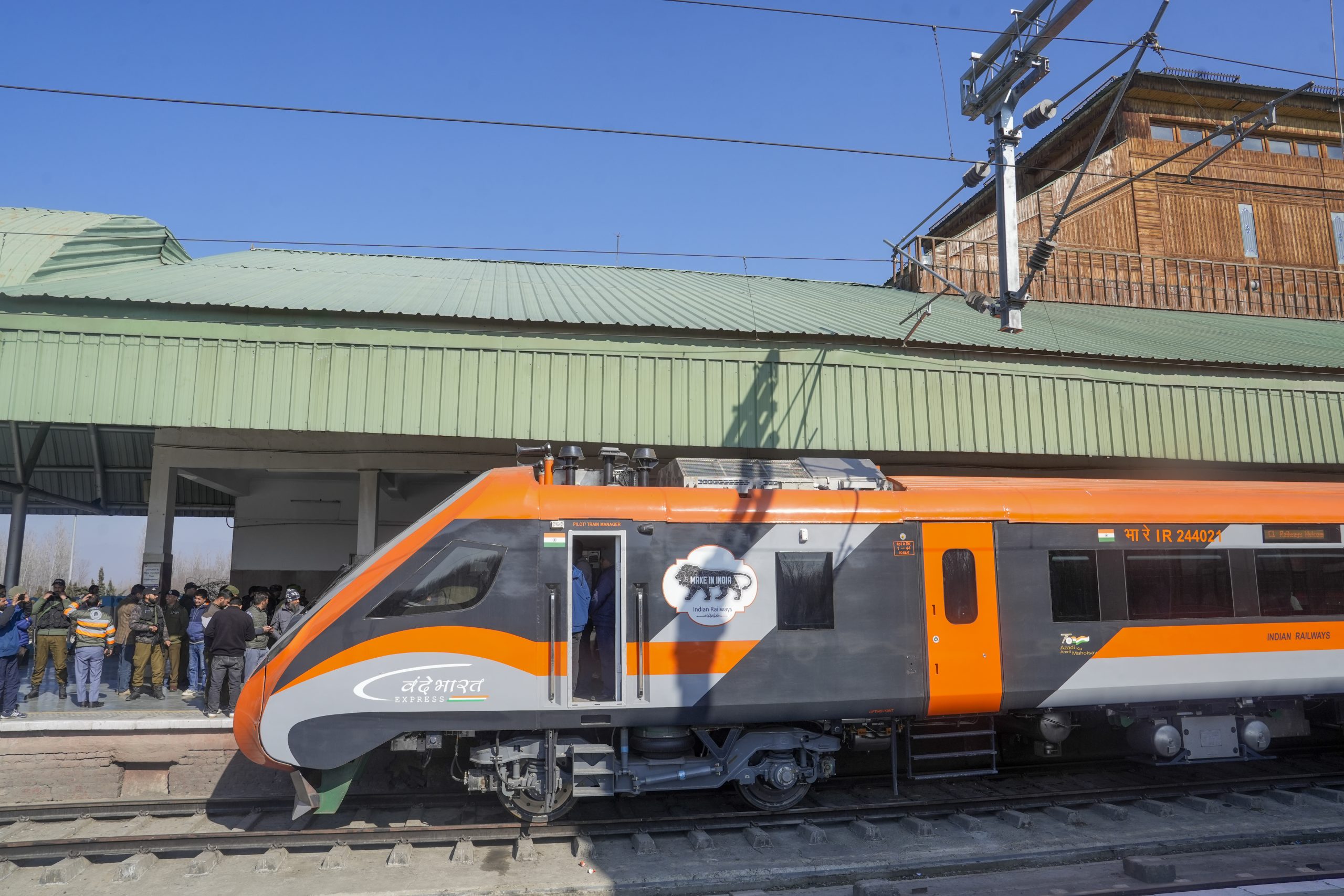SRINAGAR, Jan 25: After years of relentless efforts and innovative engineering, the vision of rail connectivity in Kashmir has finally materialized with the arrival of a specially-designed Vande Bharat Express train, which successfully completed its trial run.
The train, on its maiden journey, reached the Srinagar station in the Nowgam area from Katra in Jammu, having arrived in Jammu the previous day.
Upon its arrival at 11:30 AM, it was greeted with enthusiastic slogans and accolades for the Indian Railways.
A large crowd, including railway officials, gathered to welcome the train, many carrying garlands to honor those aboard.
Following a brief stop, the train proceeded to the Budgam station to finish its trial.
“The inaugural trial run of the Vande Bharat between Katra and Kashmir has been successfully accomplished,” an official reported.
This train is uniquely constructed to function effectively under Jammu and Kashmir’s harsh winter conditions.
Prime Minister Narendra Modi is anticipated to inaugurate the train service from Katra, with the railway safety commissioner having granted clearance for operations along the Katra-Baramulla route. The official date for this ceremony is yet to be announced.
The railway has completed 272 kilometers of the Udhampur-Srinagar-Baramulla Rail Link (USBRL) project.
Last June, the Railway Board revealed a Vande Bharat Express tailored for Jammu and Kashmir’s challenging winter weather, incorporating special features to tackle climate-related challenges.
Unlike the other 136 Vande Bharat trains operating across the country, this one includes additional features specifically designed to cope with the extreme weather conditions of Jammu and Kashmir.
These enhancements include advanced heating systems that prevent freezing of water and bio-toilet tanks, warm air supply for the vacuum system, and optimal air-brake functionality to ensure smooth operations even in sub-zero temperatures.
Moreover, it has integrated heating elements in the windshield to automatically defrost the driver’s front glass, ensuring clear visibility in severe winter conditions.
In addition to these climate-resilient attributes, the train retains all the amenities of existing Vande Bharat trains, including fully air-conditioned coaches, automatic plug doors, and mobile charging sockets.
By significantly enhancing connectivity in the Kashmir valley with the national railway network, this train exemplifies India’s dedication to narrowing geographical and economic disparities, as stated by officials.
The approval from the railway safety commissioner is a key milestone on the path to completing the USBRL project, which aims to link the Kashmir valley to the broader Indian Railway system.
Over the past month, the Indian Railways has conducted six trial runs across various sections of the track, including significant achievements like the country’s first cable-stayed rail bridge, the Anji Khad bridge, and the remarkable arch bridge over the Chenab river at Kauri.
The Anji Khad bridge is an engineering marvel, featuring a single pylon soaring 331 metres above the river bed, which took years to build, now standing 191 metres above its foundation level.
With a length of 473.25 metres, the Anji Khad bridge ranks among the two tallest railway bridges globally, alongside the Chenab bridge at Kauri, which is the highest at 359 metres above the river bed, surpassing the Eiffel Tower in Paris by 35 metres.


Leave a Reply